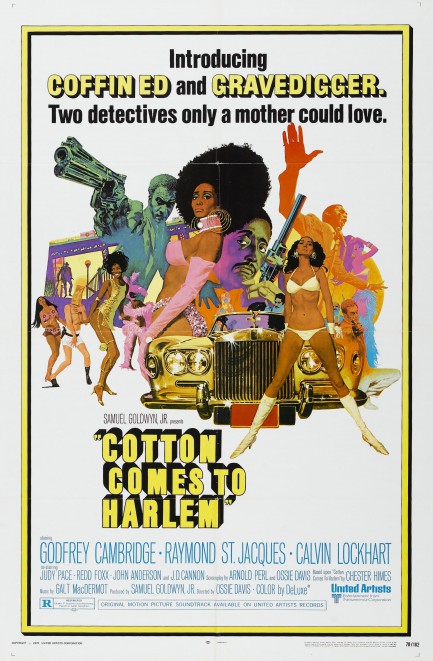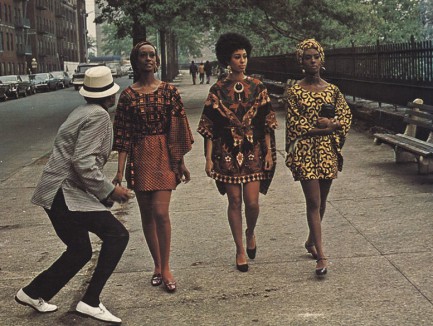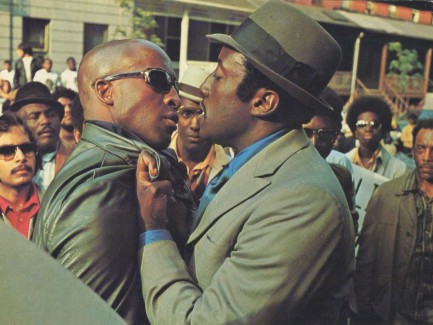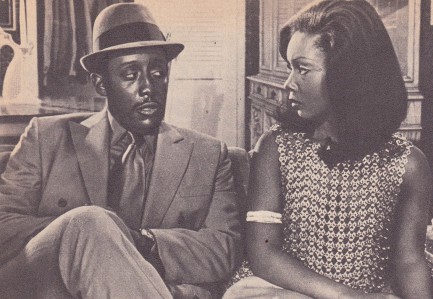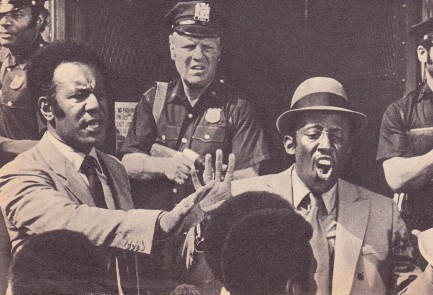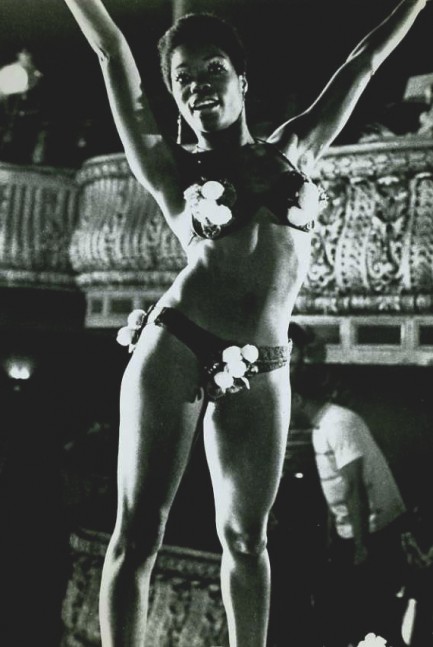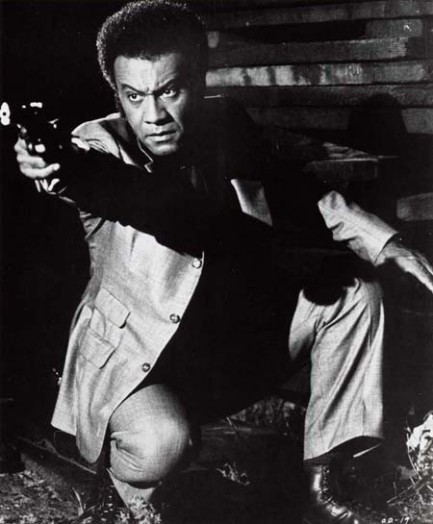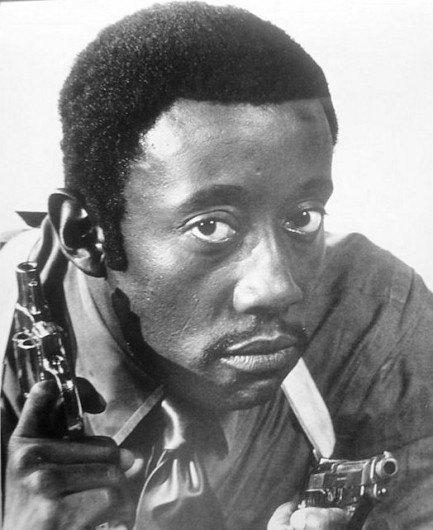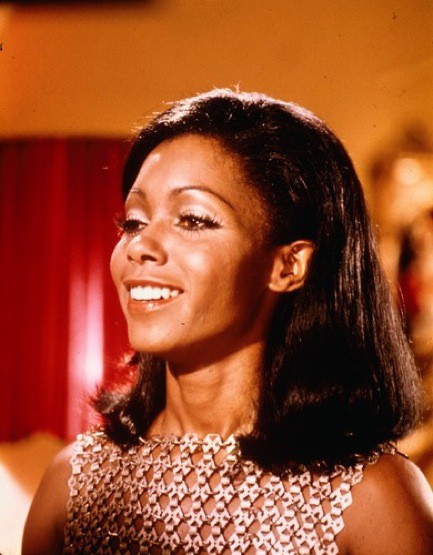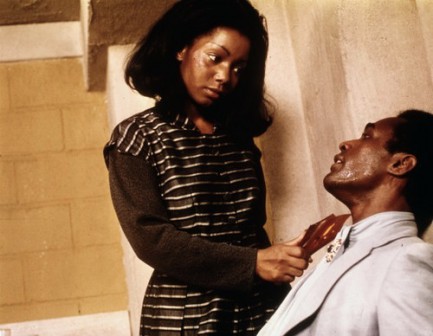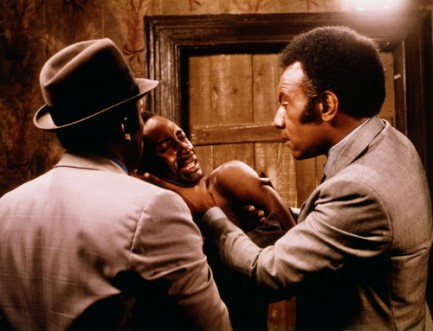 Sometimes you can't win no matter what you do. 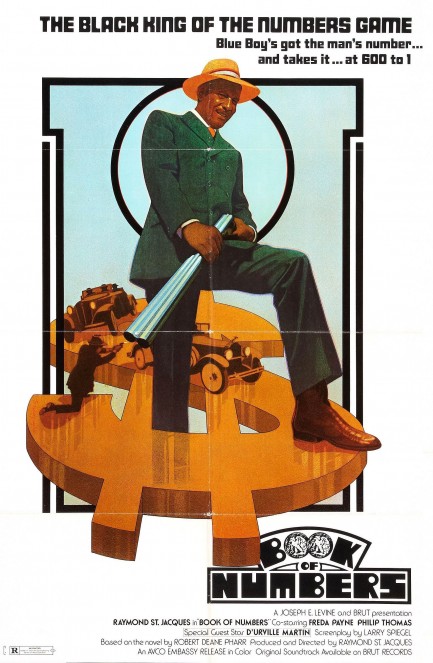
This poster was made for the crime drama Book of Numbers, which premiered in the U.S. today in 1973. The movie falls into the category of blaxploitation, but it's also an ambitious period piece, with a Depression era focus, a deep subtext, and a determination to portray a type of black American life rarely seen onscreen. During the lean years of 1930s a couple of waiters who harbor big dreams ditch food service and hatch a scheme to set up a numbers racket. They roll into El Dorado, Arkansas, get some local help, and soon are making cash faster than they know how to spend it. Their success inevitably attracts the attention of the law, organized crime, and the local Ku Klux Klan. Can the protagonists succeed against all these foes? And what does success look like for black men in the 1930s? No matter how much money they make, they are still not respected, safe, or free.
The movie stars future Miami Vice stud Philip Michael Thomas, along with Raymond St. Jacques, who produced and directed. Their two characters are decades apart in age, and vastly different in how they deal with constant racism. Thomas takes no guff from anyone, even when it costs him; St. Jacques will play any role expected of him by whites in order to survive. This doesn't sit well with the hot-headed Thomas, and leads to growing resentment. In our view, this is the most unique aspect of the film. It implies that because society forces black men to play roles, they can never be truly known by anyone outside their intimate circle. Robert Deane Pharr wrote the source material for this, and it must be an interesting novel, because it spawned a good movie. Book of Numbers is tough, adult, thought-provoking, and historically revealing. We recommend it for 1930s buffs, blaxploitation aficionados, and of course fans of Miami Vice.
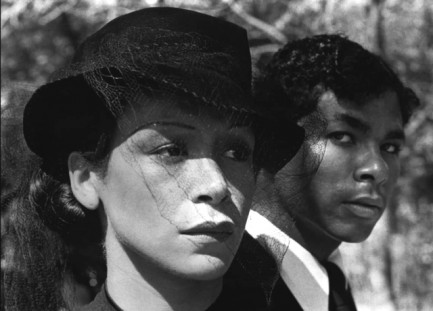 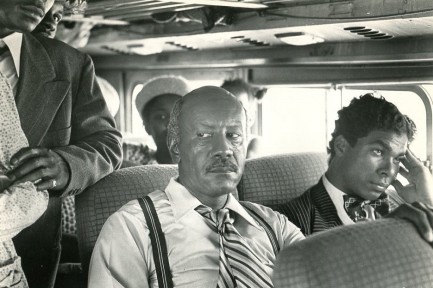 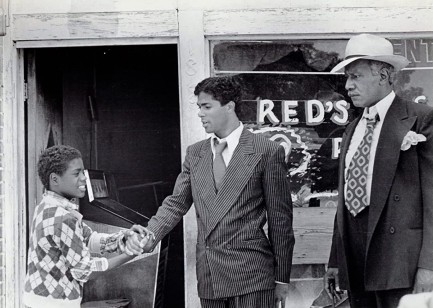 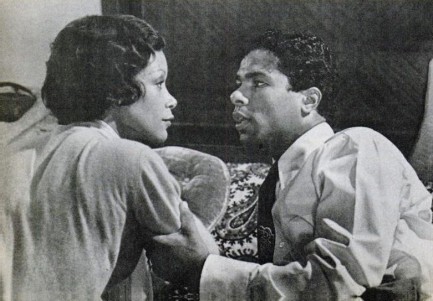 
 Life on the edge of a razor. 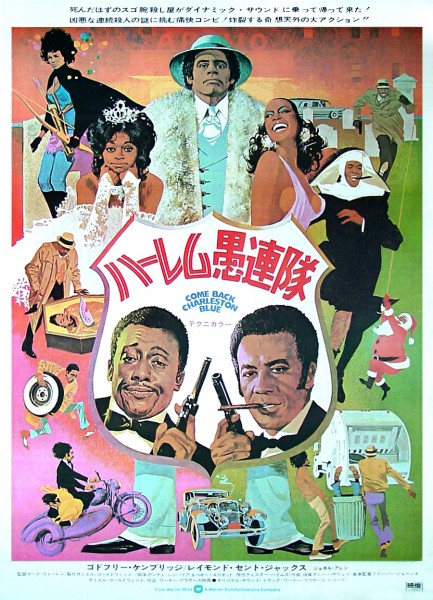
Above is a Japanese poster for the 1972 blaxploitation film Come Back Charleston Blue, starring Godfrey Cambridge and Raymond St. Jacques as the Harlem detectives Gravedigger Jones and Coffin Ed Johnson. It was the sequel to the highly successful Cotton Comes to Harlem. The plot deals with the return of a legendary vigilante named Charleston Blue, who killed with a blue steel straight razor and is believed by some to be responsible for a series of recent slayings aimed at the local drug trade. He's supposed to be dead, but his casket is empty and his collection of razors has gone missing. Is he really back from beyond? You'll have to watch the movie to find out. Reviews were mixed, but there are some thrills and laughs, there's good location filming around Harlem and environs pre-gentrification, and the soundtrack by Quincy Jones and Donny Hathaway is a nice bonus. All-in-all, a middling effort, but certainly not a waste of time. Come Back Charleston Blue first played in Japan today in 1973.
|
 |

The headlines that mattered yesteryear.
1945—Mussolini Is Arrested
Italian dictator Benito Mussolini, his mistress Clara Petacci, and fifteen supporters are arrested by Italian partisans in Dongo, Italy while attempting to escape the region in the wake of the collapse of Mussolini's fascist government. The next day, Mussolini and his mistress are both executed, along with most of the members of their group. Their bodies are then trucked to Milan where they are hung upside down on meathooks from the roof of a gas station, then spat upon and stoned until they are unrecognizable. 1933—The Gestapo Is Formed
The Geheime Staatspolizei, aka Gestapo, the official secret police force of Nazi Germany, is established. It begins under the administration of SS leader Heinrich Himmler in his position as Chief of German Police, but by 1939 is administered by the Reichssicherheitshauptamt, or Reich Main Security Office, and is a feared entity in every corner of Germany and beyond. 1937—Guernica Is Bombed
In Spain during the Spanish Civil War, the Basque town of Guernica is bombed by the German Luftwaffe, resulting in widespread destruction and casualties. The Basque government reports 1,654 people killed, while later research suggests far fewer deaths, but regardless, Guernica is viewed as an example of terror bombing and other countries learn that Nazi Germany is committed to that tactic. The bombing also becomes inspiration for Pablo Picasso, resulting in a protest painting that is not only his most famous work, but one the most important pieces of art ever produced. 1939—Batman Debuts
In Detective Comics #27, DC Comics publishes its second major superhero, Batman, who becomes one of the most popular comic book characters of all time, and then a popular camp television series starring Adam West, and lastly a multi-million dollar movie franchise starring Michael Keaton, then George Clooney, and finally Christian Bale. 1953—Crick and Watson Publish DNA Results
British scientists James D Watson and Francis Crick publish an article detailing their discovery of the existence and structure of deoxyribonucleic acid, or DNA, in Nature magazine. Their findings answer one of the oldest and most fundamental questions of biology, that of how living things reproduce themselves.
|

|
|

It's easy. We have an uploader that makes it a snap. Use it to submit your art, text, header, and subhead. Your post can be funny, serious, or anything in between, as long as it's vintage pulp. You'll get a byline and experience the fleeting pride of free authorship. We'll edit your post for typos, but the rest is up to you. Click here to give us your best shot.

|
|










